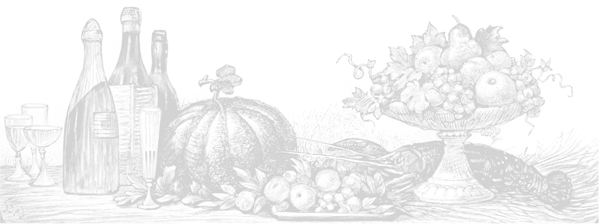

The last sensory system we will discuss that contributes to flavor is hearing. Although it seems unlikely, it has its own role to play.
The Auditory Pathway
The auditory pathway starts with the ear, composed of the outer ear and the ear canal leading to the ear drum (tympanic membrane). Inside is the middle ear, with the three little bones that transfer the vibration of the eardrum to the round window of the inner ear, where the cochlea contains the hair cells that respond to the vibrations set up by the sounds.
The hair cells pass their responses on to the endings of ganglion cells that connect to the cochlear nucleus in the brain stem. Here the fibers make contact with a number of different types of neuron, each of which begins to extract specific attributes of the auditory stimuli, such as pitch, loudness, or duration; in other words, as in the case of smell, the neurons begin to create our human experience of sound. This information then enters a complex network of brain stem centers that process the signals and send them to a higher brain stem center, the inferior colliculus, which in turn sends them to the auditory thalamus, and from there on to the primary auditory neocortical receiving area. Thus, in contrast to olfaction and vision, hearing, like taste and touch, starts as a brain stem sense. However, at the cortical level, it quickly establishes itself in humans as a higher cognitive sense through its role in speech and language.
How Food Sounds
From this brief review it appears that the auditory system is designed to receive sound signals from the environment. That is how we think of it in our daily lives. However, from the point of view of flavor, the system is relevant for the sounds it picks up as we consume our food and drinks.
From an evolutionary point of view, we can assume that the sounds of food being bitten and chewed gave significant information to our ancestors about the toughness of a vegetable, the ripeness of a fruit, or the squishiness of a hunk of flesh.
In our everyday lives, we don’t usually think of the sound of food as a part of its flavor, but in fact it is. The “snap, crackle, and pop” of a breakfast cereal can be as important a selling point as its taste; in fact, the qualities are inseparable in making up the flavor. The crunching sound of deep-fried French-fried potatoes or chicken nuggets is an integral part of the chewing experience. And it is not just the sound of the food itself. The sound of our jaw working our mandibular joint is to our eating experience as familiar as the sound of a backhoe to its driver in digging in the ground. Although it is not essential to our eating experience, it is part of what we expect of it. And if it’s not there, we notice it.
Although research on the interaction of hearing with the other senses of flavor is limited, some interesting facts are known. For example, crispness is a quality desirable in many foods. Some studies have claimed that crispness is the food texture of which people are most aware. This would make sense if it was critical for judging the ripeness of fruit for our human ancestors. One might assume that it is a quality related to touch and jaw action. However, an early study suggested that crispness of a food is judged primarily from the way it sounds as the teeth crush the brittle foodstuff, such as a potato chip. Presumably a crisp sound makes the chip taste better. This seems as though the sensation might be interpreted at the neocortical level.
Other studies have discriminated between crispness and “crackliness,” and between crispness and crunchiness. Crisp has been applied to the chewing sounds of flat breads, with high frequency sounds above 5 kHz. Crunchy has been applied to the sound of chewing raw carrots, which produces lower pitches of 1 to 2 kHz. Crackly has been used to characterize dry biscuits, which produce lower frequencies, sensed more through bone conduction in the mandible and maxilla. In general, the clearer and louder the sound, the more we like it.
Several of the mouth-feel stimuli have their characteristic sounds in the mouth; such as highly viscous foods compared with thin soups.
The Sound of Wine
Liquids have their sounds as they are swished in the mouth or swallowed. Wine tasters use every cue to tell them about the quality of a wine, as this anecdote I heard in France illustrates:
The chef Paul Bocuse defines thusly the ideal wine: it satisfies perfectly all five senses: vision, by its color; smell, by its bouquet; touch, by its freshness; taste, by its flavor; and hearing, by its glou-glou.
Bocuse, apparently in jest, includes the sense of hearing as being essential to the ideal wine by using the term glou-glou to describe the sound of the wine being swallowed. Although it seems like modern slang, glou-glou in fact is a classical reference in French literature, as I learned when I told this anecdote to my friend Jacques Guicharnaud. A courtly man with a lively sense of humor, Guicharnaud was a much-loved teacher of French literature at Yale University for many years. After I told him Bocuse’s anecdote, he pounced and said “Oh, glou-glou is a quote from Molière.” And indeed it is. In The Doctor in Spite of Himself (Le médecin malgré lui), Sganarelle comes out drunk, holding high a bottle and singing a little song:
How sweet from you
My bottle true;
How sweet from you
Your little glouglou.
The glou-glou sound of the wine disappearing down our throat is due to the muscle activity we use in moving our tongue about and swallowing, reminding us that flavor depends on our motor systems as well as our senses.